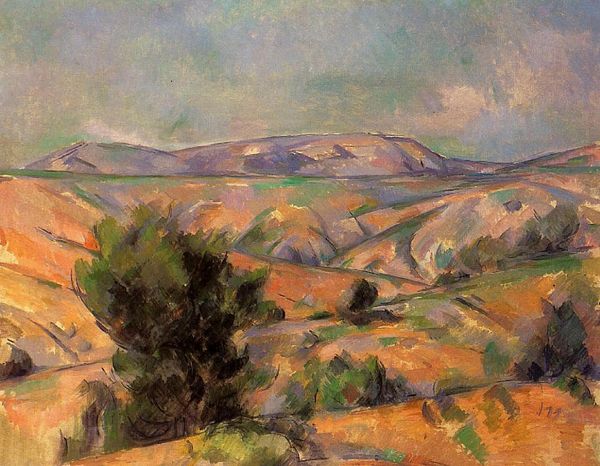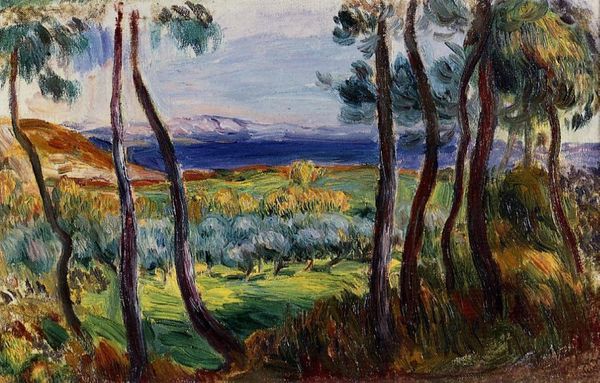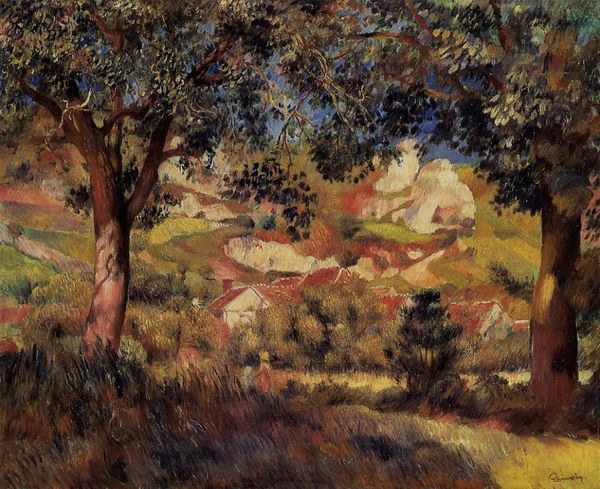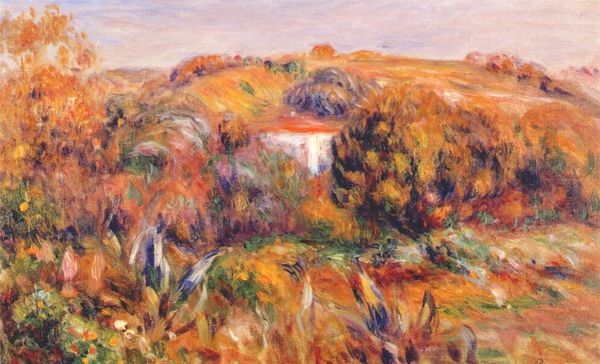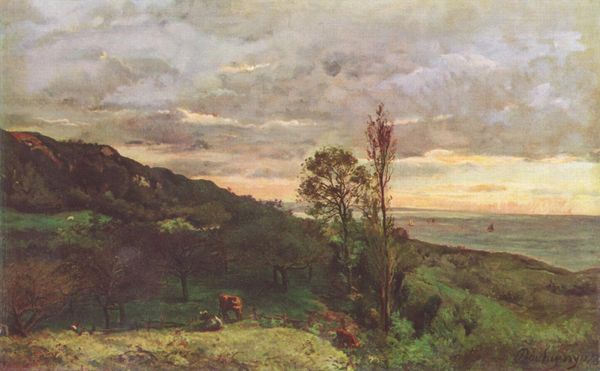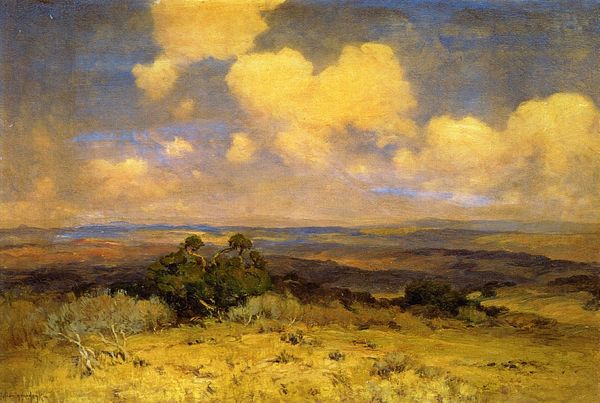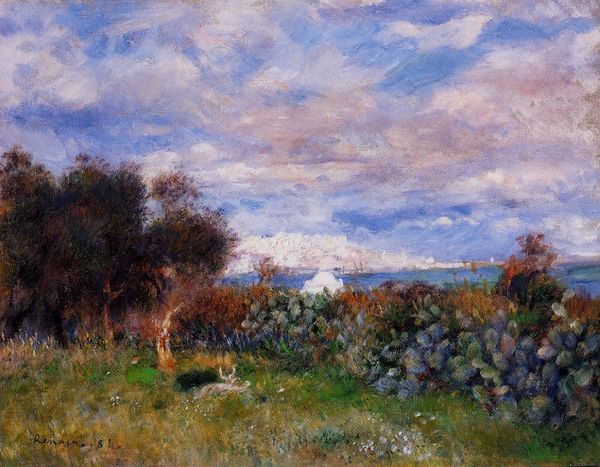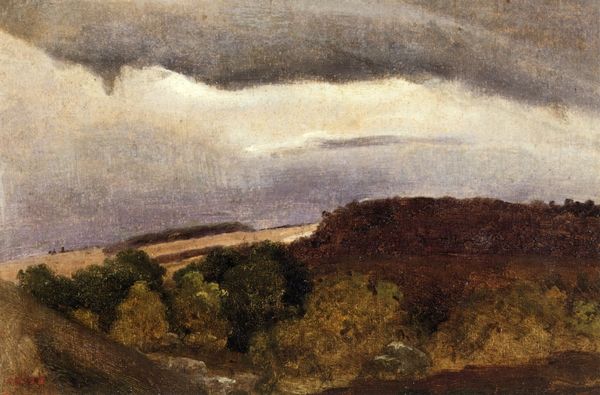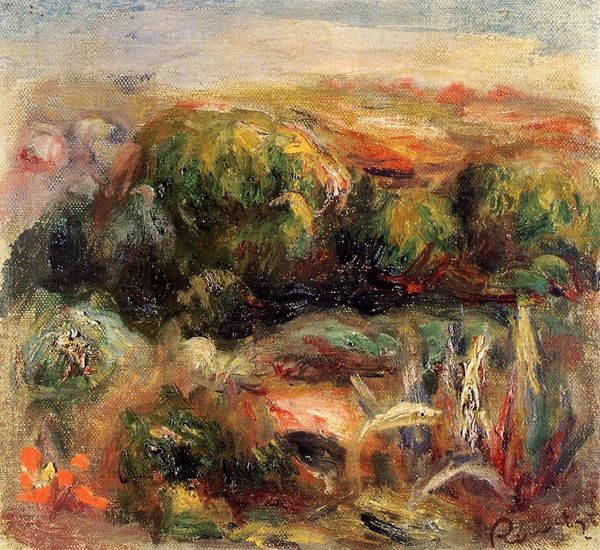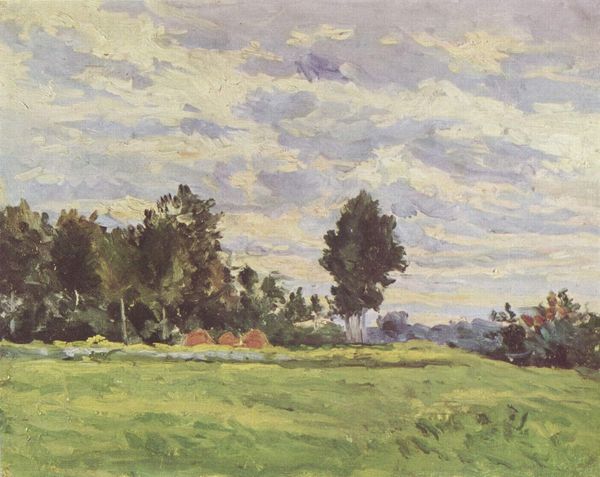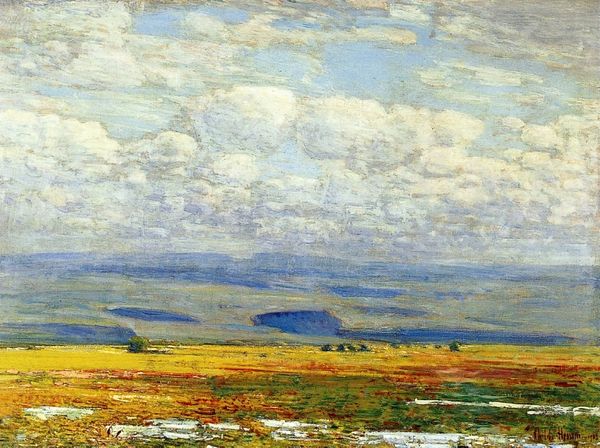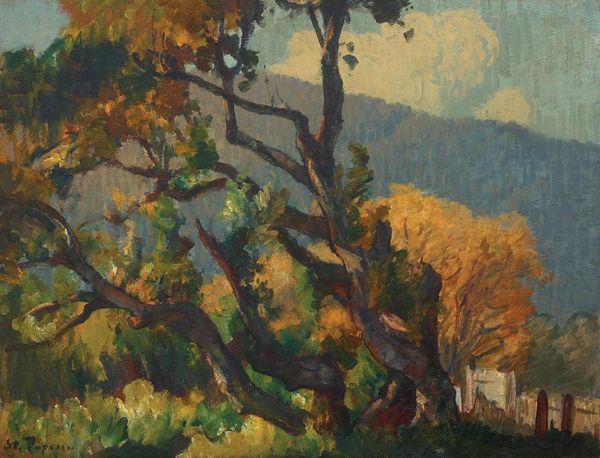
Copyright: Public domain
Editor: This is Cézanne's "Landscape," painted in 1867. Looking at it, I’m struck by the color palette – it feels so earthy and muted. What cultural echoes do you find in Cézanne’s choices? Curator: Cézanne's use of earth tones taps into something primal within us. He is using color symbolically – the green and browns often tied to ideas of growth, stability, and the enduring connection between humanity and the land. Doesn’t that layering create a palpable sense of depth, an almost tangible reality? Editor: It definitely does. So you see these earthy tones and the painting's texture as deliberate choices that convey deeper symbolic meanings, reflecting this deep-rooted connection to nature? Curator: Precisely. Landscapes, particularly those painted en plein air as this one was, were a way of reaffirming that connection in a rapidly industrializing world. The visible brushstrokes add another layer – a kind of "honesty" about the process, a directness of feeling. What does the horizon evoke for you? Editor: For me, the distant horizon creates a sense of limitlessness but also some melancholy. It suggests the world stretches far beyond our grasp. Is there a sense that Cezanne, consciously or unconsciously, understood something of a shifting, potentially unstable modern consciousness? Curator: Yes, perhaps you've touched on a central nerve there. Cézanne prefigures a shift in how we relate to space and the very idea of representation itself. It feels… restless. What does this reading suggest to you? Editor: Thinking about the broader cultural moment really enriches how I understand his work now – not just a depiction of a scene, but almost a feeling of something solid beginning to fracture, of searching for new ways of belonging to nature. Thanks! Curator: And thank you; looking at familiar symbols with fresh eyes can open new vistas.
Comments
No comments
Be the first to comment and join the conversation on the ultimate creative platform.
